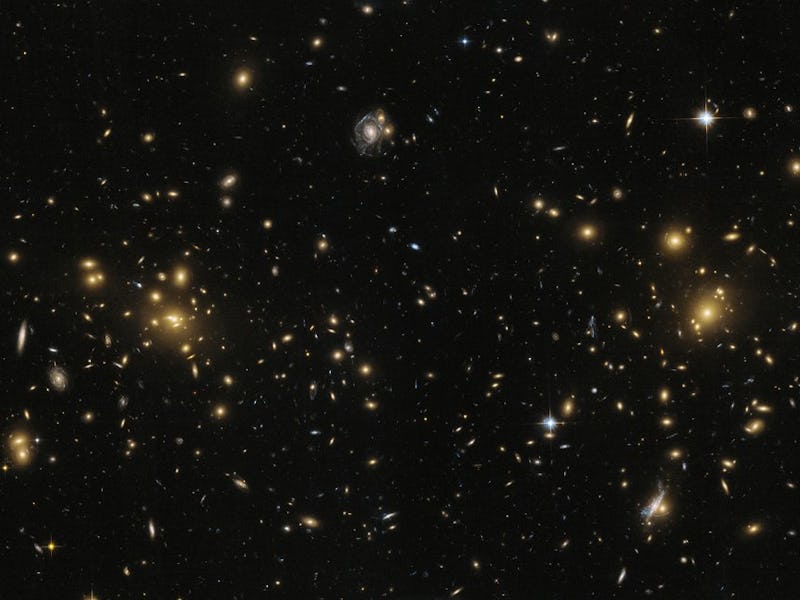This Giant Cluster of Galaxies is the Best Light Show in the Universe
We put a sub-cluster in your sub-cluster.

What seems like one unified gathering of bright white stars and radiant spiral galaxies against the pitch black backdrop of the universe is really just one piece of a much larger galactic cluster.
In the picture below you’ll see A1758N — a sub-cluster of the gargantuan Abell 1758 galaxy cluster containing hundreds of galaxies — which is actually the result of two even smaller clusters joining forces. This image was taken using the NASA/ESA Hubble Space telescope and highlights the fragmented history of Abell 1758.
Abell 1758, which is about 3.2 billion light years from Earth, was first discovered back in 1958 and was initially classified as a singular massive object. But 40 years later, astronomers took another look at the cluster using the ROSAT satellite X-ray telescope, only to find it was actually two concentrations of galaxies.
These two sub-clusters being held together by power gravitational forces have been named A1758N (North) and A1758S (South) and are roughly 2.4 million light years apart. The North cluster is the only thing that’s visible in the Hubble picture, but it turns out that this sub-cluster is the result of two even smaller clusters coming together.
The two clusters that make up A1758N have also been given directional names to complete the compass that is Abell 1758. A1758NE (East) and A1758NW (West) are in the process of colliding and they’re causing some serious intergalactic disturbances.
Collisions like these are some of the most energetic events in the universe. They produce immensely powerful radio waves that get shot out into the cosmos in all directions. These are called radio halos and radio relics, and although you can’t see them in this Hubble picture, scientists can pick them up using radio-wave detecting telescopes.
Comprehending how galaxy clusters like Abell 1758 are formed and change over time allows astronomers to understand how celestial bodies age and evolve in the universe. As a side benefit, we get to look at mesmerizing space pics, so honestly it’s a win-win for everybody.